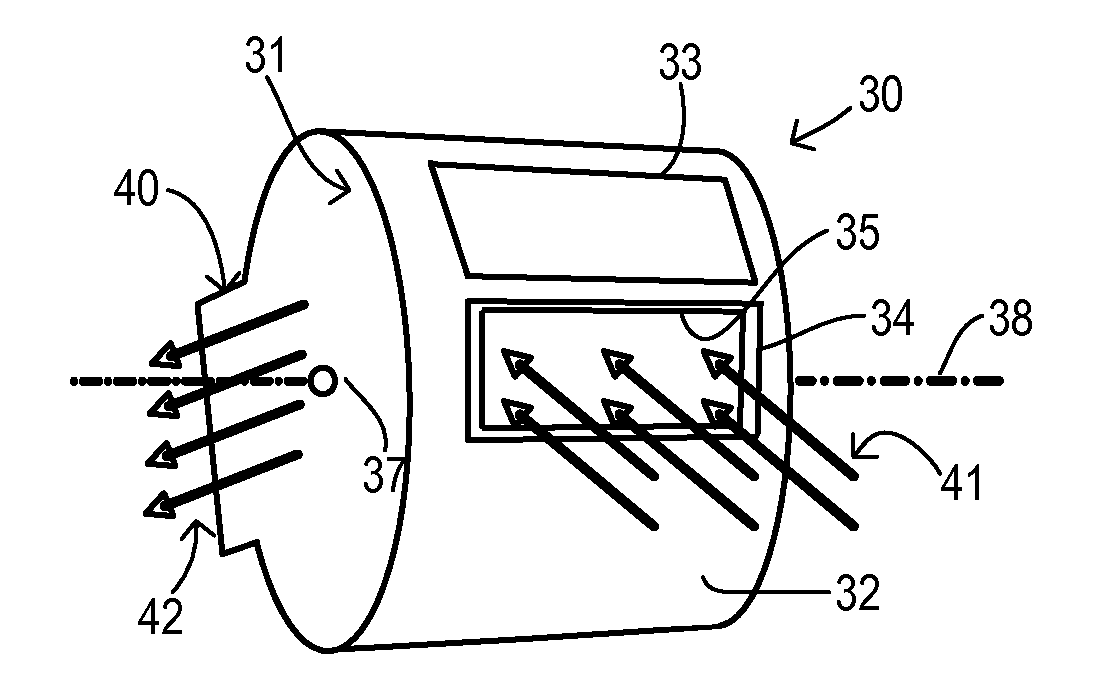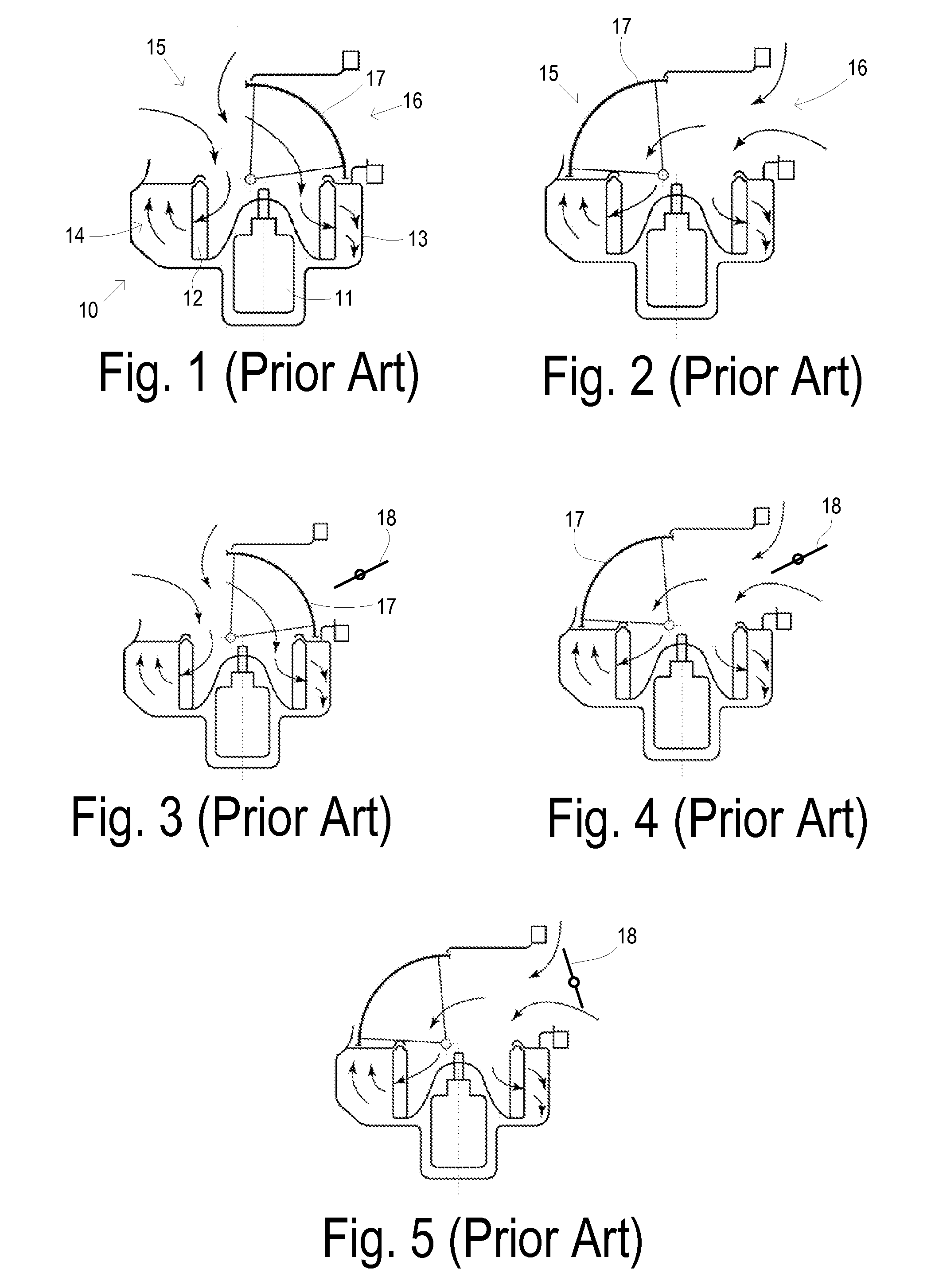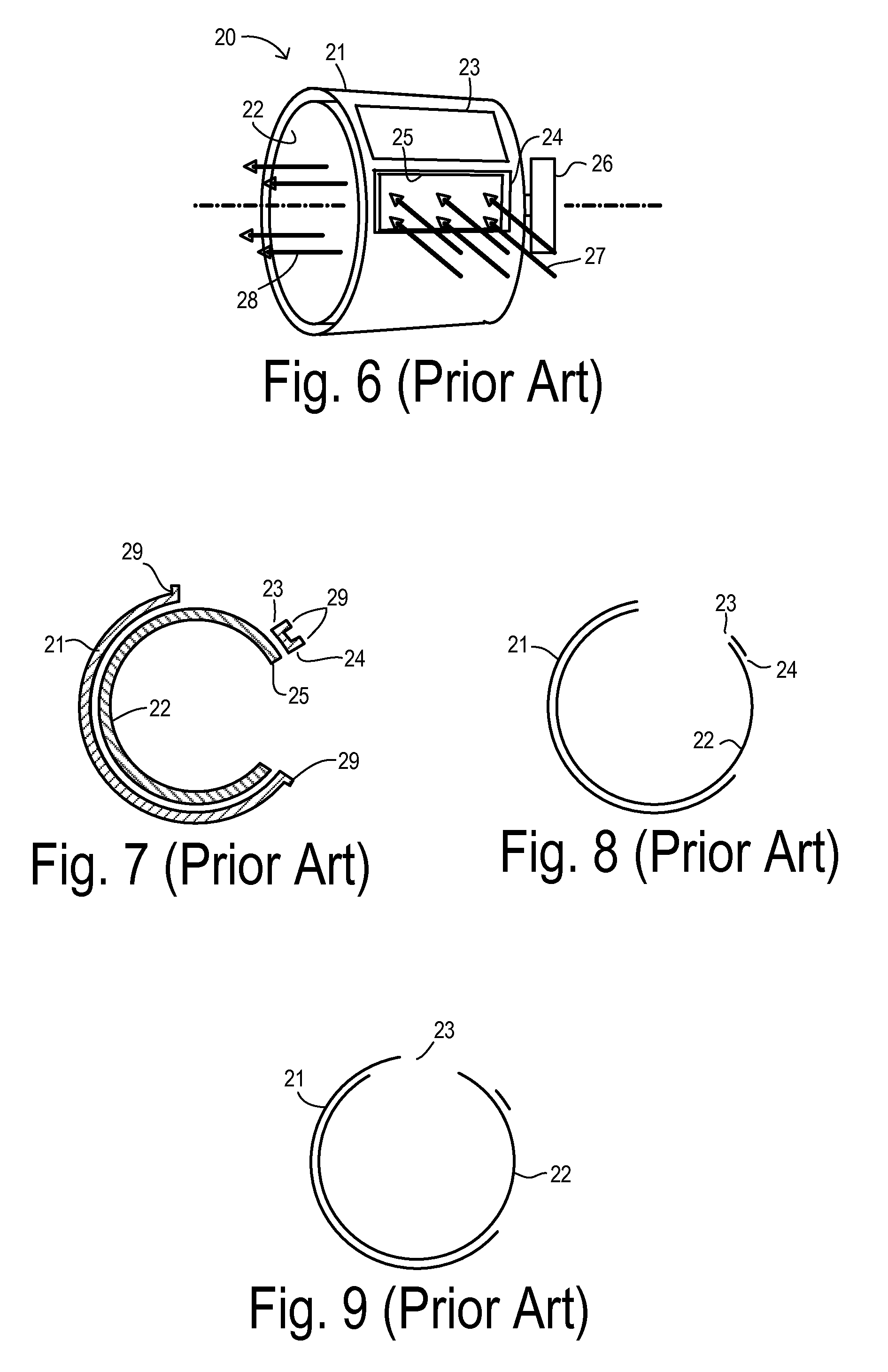HVAC Air Inlet with Blend Mode and Fresh-Restricted Mode
a technology of air inlet and filter mode, which is applied in the direction of vehicle heating/cooling devices, vehicle components, transportation and packaging, etc., can solve the problems of increasing the cost of the second door and its actuator, the inability to meet the performance criteria of heater and defrosting, and the inability to ram the air
- Summary
- Abstract
- Description
- Claims
- Application Information
AI Technical Summary
Benefits of technology
Problems solved by technology
Method used
Image
Examples
Embodiment Construction
[0023]One conventional type of air inlet mechanism using what is known as a football-style door as shown in FIGS. 1 and 2. A blower system 10 has an electric motor 11 driving a set of blades 12 which are all contained in a housing 13. Inlet air is blown by set of blades 12 into an outlet 14 from blower system 10. Housing 13 includes a recirculation inlet 15 and a fresh air inlet 16 which may be controllably blocked by football door 17 which is shown in the full recirculation mode in FIG. 1. By pivoting door 17 fully counterclockwise as shown in FIG. 2, a full fresh mode is obtained. Football door 17 may also be pivoted to an intermediate position where it blocks complementary portions of the recirculation inlet and fresh air inlet to provide a blend mode.
[0024]In order to provide a fresh restricted mode in connection with the football-style door, a butterfly door 18 is provided as shown in FIGS. 3-5. With butterfly door 18 in its open position, football door 17 may be positioned to ...
PUM
 Login to View More
Login to View More Abstract
Description
Claims
Application Information
 Login to View More
Login to View More - R&D
- Intellectual Property
- Life Sciences
- Materials
- Tech Scout
- Unparalleled Data Quality
- Higher Quality Content
- 60% Fewer Hallucinations
Browse by: Latest US Patents, China's latest patents, Technical Efficacy Thesaurus, Application Domain, Technology Topic, Popular Technical Reports.
© 2025 PatSnap. All rights reserved.Legal|Privacy policy|Modern Slavery Act Transparency Statement|Sitemap|About US| Contact US: help@patsnap.com



